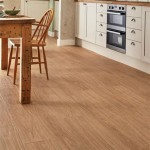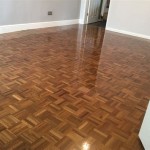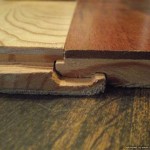When it comes to hardwood flooring, many homeowners are unaware of the importance of an expansion gap. An expansion gap is a space left between the walls and the flooring to allow for expansion and contraction of the wood due to changes in humidity and temperature. Without an expansion gap, the flooring can buckle, warp, or crack due to the pressure of the boards against the walls, resulting in costly repairs. Understanding the importance of an expansion gap and how to install it properly is key to making sure your hardwood floors last for years to come.
Why is an Expansion Gap Necessary?
Hardwood floors can expand and contract with changes in humidity and temperature, which can cause them to buckle, warp, or crack if there isn’t enough room for them to expand. Even the most stable hardwood floors will still experience some degree of movement. An expansion gap allows the flooring to freely expand and contract without damaging the walls or the flooring itself.
When installing hardwood flooring, it is important to leave an expansion gap of between 3/8” and ½” between the walls and the flooring. If the gap is too narrow, the floor may not be able to expand properly, resulting in warping or buckling. If the gap is too wide, it may cause gaps between the boards and allow for too much air flow, which can damage the floor.
How to Install an Expansion Gap
When installing hardwood floors, it is important to leave an expansion gap of between 3/8” and ½”. The gap should be filled with either a flexible sealant, such as a foam or rubber sealant, or with a filler such as wood putty or caulk. It is important to make sure the sealant or filler is applied evenly, as any gaps or inconsistencies can cause the boards to buckle or warp.
It is also important to make sure the expansion gap is consistent around the entire room. The gap should be the same width all the way around the perimeter of the room, and should be the same width between each board. This will help ensure the floor is able to expand and contract evenly.
Other Considerations
When installing hardwood floors, it is important to make sure the floor is level and the subfloor is in good condition. If the subfloor is uneven, it can cause the boards to buckle or warp. If using a floating floor system, it is important to make sure the boards are locked together properly and that the expansion gaps are maintained.
It is also important to make sure that the flooring is installed correctly. If the boards are not properly secured or the expansion gaps are not maintained, it can cause the flooring to buckle or warp. It is also important to make sure the boards are installed with the grain running in the same direction to help minimize any movement.
Conclusion
An expansion gap is an important part of installing hardwood floors. It is important to make sure the gap is the correct size and that it is filled properly with a flexible sealant or filler. It is also important to make sure the subfloor is level and the boards are installed correctly to help minimize any movement. Taking the time to make sure the expansion gap is installed properly will help ensure your hardwood floors last for years to come.















Related Posts








